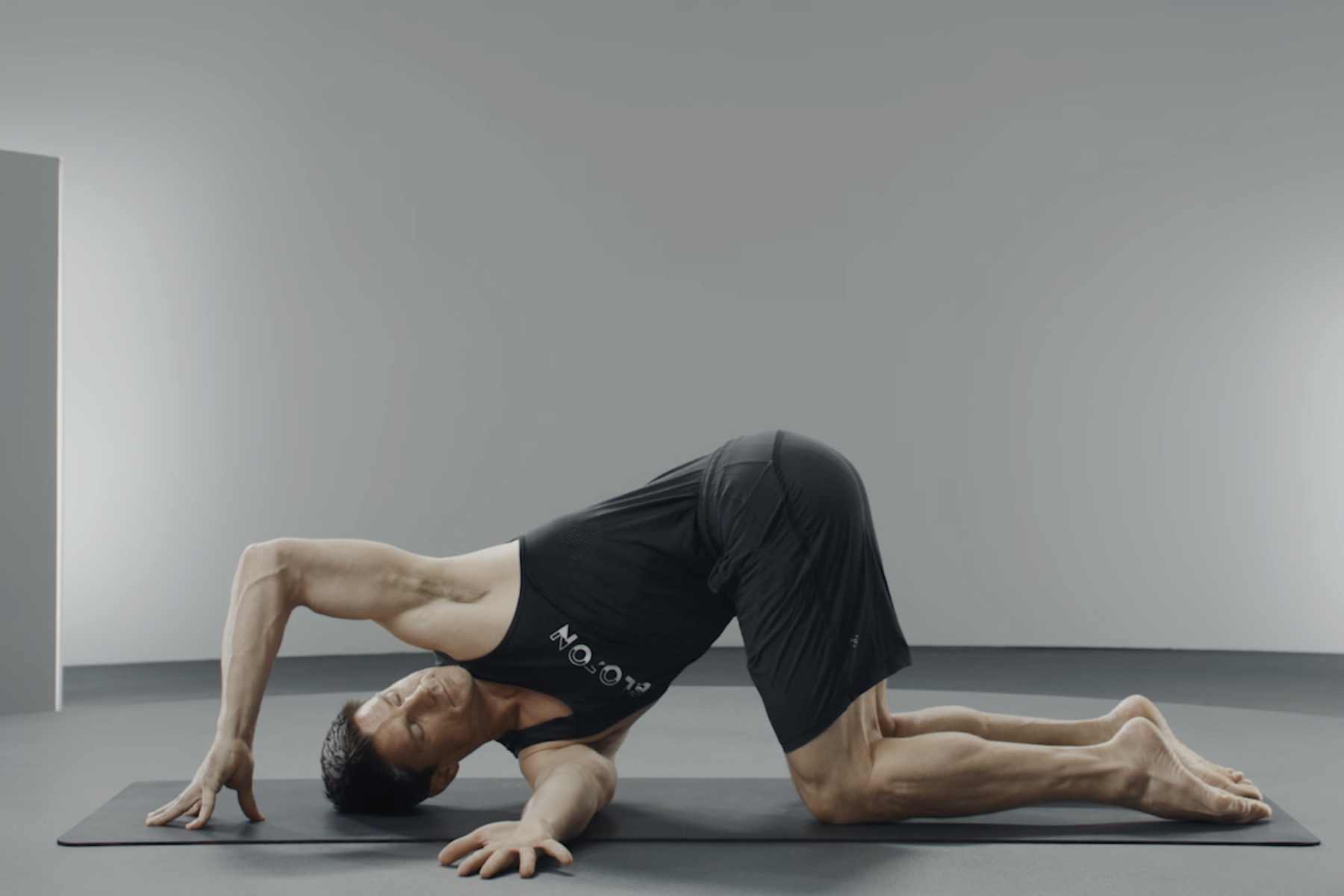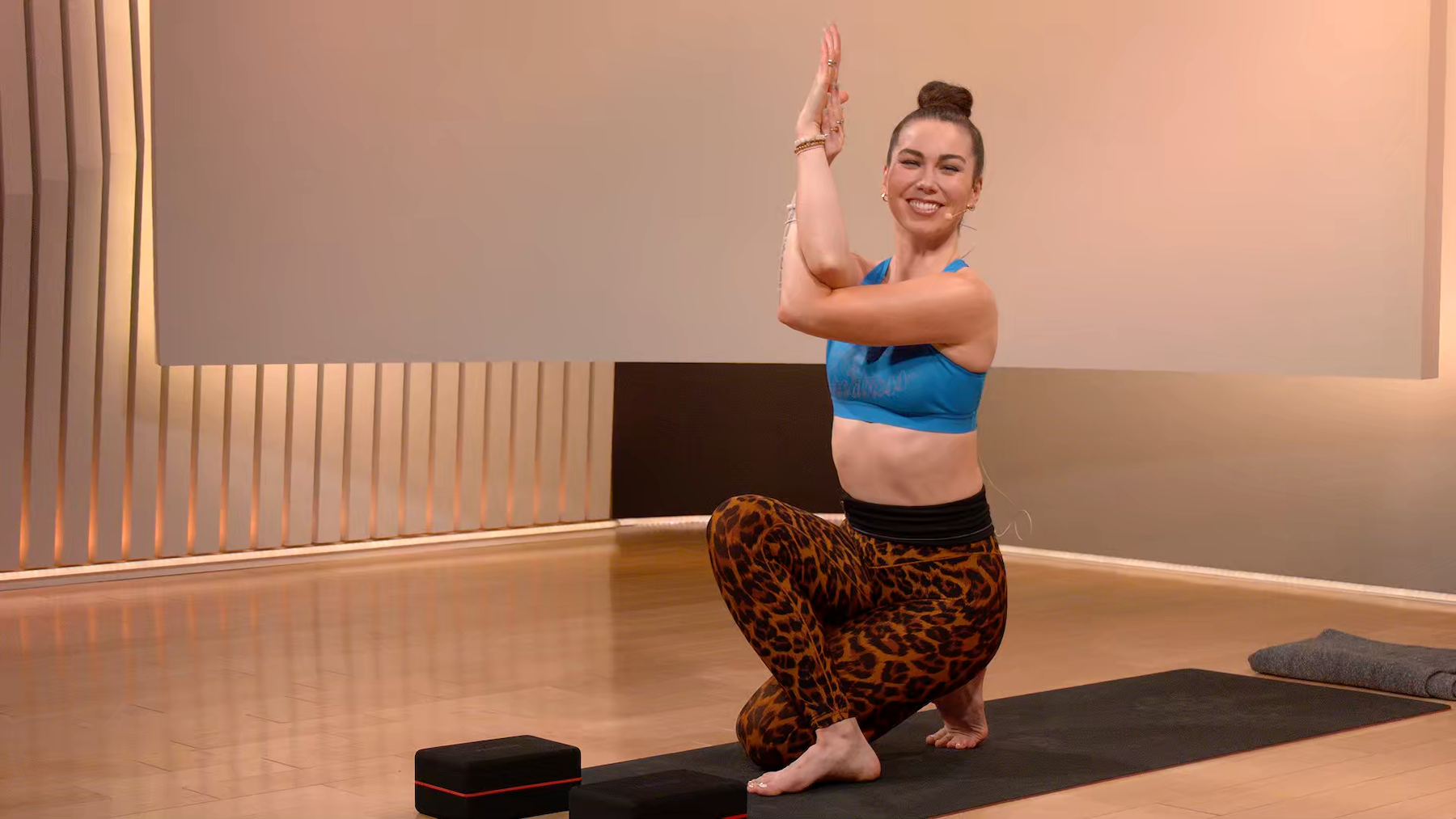
Nitat Termmee / Moment vs Getty Images
10 Stretches to Target Tight Shoulders
Relieve shoulder tension with these moves that will make you feel so, so good.
By Emily Laurence•
Why Shoulder Stretches Are Important
1. Cross-Body Stretch
2. Doorway Pectoral Stretch
3. Downward Facing Dog
4. Thread the Needle
5. Upper Trapezius Stretch
6. Advanced Upper Trapezius Stretch
7. Shoulder Rolls
8. Eagle Arms
9. Puppy Pose
10. Advanced Puppy Pose
How To Add Shoulder Stretches Into Your Stretch Routine
Shoulder joints are the body’s most flexible and complicated joints, consisting of three bones, nearly a dozen different muscles, and many ligaments and tendons. That’s why when something’s off with one of your shoulder joints, it’s hard to do everyday tasks, like putting away laundry or reaching under the couch for something you dropped. As for throwing a ball or swinging a racquet? Forget about it.
If you want to protect your shoulders from injury, it’s important to show them some love from time-to-time. Not sure where to start? Read on the learn more about the best shoulder stretches to try and check out the Peloton App for guided full- and upper-body stretch classes.

Peloton App
Access thousands of classes with no equipment needed.
Why Shoulder Stretches Are Important
The shoulders have a more extensive range of motion than any other part of the body, according to Peloton instructor Nico Sarani. “Since our arms and hands are connected to them, our shoulder joints enable us to reach in almost every direction possible, which makes life much easier for us homo sapiens—such as defending yourself from predators from all sides, or just reaching for the cookie jar high up on the shelf,” she says. “Unfortunately, we pay little attention to them.”
Exercises like lifting weights can strengthen shoulders, Nico explains, but stretching the shoulders helps with flexibility, which is a different need—and it’s one people often neglect. That’s a problem, because skipping your shoulder stretches compromises movement in the arms and can also cause neck tension. “We already hold a lot of tension in our neck and our shoulders due to stress,” Nico says. Because of this, “it’s important to loosen up that area of our body regularly and give it a little stretch, if you can on a daily basis.”
Devin Trachman, PT, DPT, MTC, an orthopedic physical therapist with Physical Therapy Central in Oklahoma, agrees, adding that shoulder stretches help relieve tension that can stem from poor posture, muscle imbalances, overusing shoulder muscles (such as repeatedly swinging a tennis racket or golf club), or from a medical condition like arthritis or tendinitis.
Shoulder stretches also improve blood circulation, release tension, and stimulate the parasympathetic nervous system, which is what helps us feel at ease. “[Shoulder stretches] let us relax by signaling to the body that it doesn't have to tense up its muscles for the purposes of fight or flight; it fundamentally tells the body we are safe,” Nico explains.
Ready to give shoulder stretches a try? Here are 10 simple moves that’ll make a big difference.

1. Cross-Body Stretch
This is great for opening up the posterior part of the shoulder and getting an internal rotation stretch, Dr. Trachman says. It also helps relieve stiffness in the neck, back, hips and knees.
How to Do It
While standing, place one arm straight across your chest.
Hold the arm in place across your chest using your other arm.
Gently pull your extended arm toward your chest for between 10 and 30 seconds.
Release and repeat with the other arm.
2. Doorway Pectoral Stretch
Many people have shoulder tightness because we naturally round our shoulders forward while we’re at the computer, on our phones, or driving, Dr. Trachman says. The doorway pectoral stretch will help open up the front of the shoulders to alleviate that discomfort.
How to Do It
Stand in the center of an open doorway, placing your hands on the frame at a height that’s slightly higher than your shoulders.
Lean forward until you feel a stretch in your chest and shoulders. Hold for 10 seconds.

3. Downward Facing Dog
A traditional yoga pose, both Nico and Dr. Trachman recommend Downward Facing Dog as a way to stretch your shoulders. Nico adds that the pose also helps strengthen the shoulder girdle, which consists of the clavicle and shoulder blade.
How to Do It
Start on all fours with both hands and feet on the floor. Your hands should be shoulder-width apart.
Spread your fingers out, tuck your toes, and press down through your knuckles.
Take a deep inhale and lift your knees, reaching your hips up and back as you straighten your legs as much as you can.
Take a few deep breaths, moving deeper into the stretch. Then, gently come out of the stretch by lowering your knees back down to the ground.

4. Thread the Needle
Dr. Trachman likes this shoulder stretch because it opens up the shoulders, helping to relieve pain and tension from hunching forward all the time.
How to Do It
Start on all fours with your hands and knees on the floor. Your spine should be in a neutral position.
Extend one arm toward the ceiling, opening your chest up and gazing in the direction of your raised arm.
3. Move your extended arm under your chest, toward the floor and behind your other arm. Allow your extended arm and shoulder to rest on the floor. Rest your head on the floor as well.
Take a few deep breaths, holding the stretch.
Gently come out of the stretch and repeat with the other side.

5. Upper Trapezius Stretch
“The upper trapezius stretch focuses on the top part of the shoulder,” Dr. Trachman says. "It helps relieve tight muscles in both the shoulders and neck.”
How to Do It
Start by sitting or standing up straight.
Bend your neck to one side, bringing your ear toward your shoulder.
Gently use your hand to very slightly pull your head toward your shoulder.
Hold for between 10 and 30 seconds.
Come back to the starting position and repeat on the other side.
6. Advanced Upper Trapezius Stretch
If the upper trapezius stretch feels good and you want to feel it in a more intense way, Dr. Trachman offers up this modification.
How to Do It
Start by sitting or standing up straight, holding a dumbbell that’s between 5 to 10 pounds (whatever’s most comfortable for you) in one hand.
Bend your neck to one side, bringing your ear toward the shoulder that’s not holding the dumbbell.
At the same time, reach your arm with the dumbbell closer to the floor.
Hold for between 10 and 30 seconds.
Come back to the starting position and repeat on the other side.
7. Shoulder Rolls
One of Nico’s favorite shoulder stretches, shoulder rolls relieve tension and improve circulation. This move targets the rotator cuff, deltoids, and trapezius.
How to Do It
Stand or sit upright, slightly engaging the core for stability.
Circle both shoulders backward and down, then forward and up again. Do this 10 to 20 times in one direction, then switch.
End with the shoulders gently drawn back and down in a relaxed manner.

8. Eagle Arms
Like Downward Facing Dog, Eagle Arms is a traditional yoga pose. In addition to relieving shoulder tension, this stretch targets the upper back and ultimately helps promote better posture.
How to Do It
Start either seated or standing, with a straight spine.
Bring the arms together in front while swinging the right arm over the left arm. Place the right elbow and upper arm over the left elbow and upper arm.
Wrap your left palm around your right forearm, until your palms touch. (If that’s not possible, see if you can take hold somewhere on your wrist.)
Lift the sternum, lift the elbows, and let the shoulders drop, which will deepen the stretch. Hold for 30 seconds.
Switch sides.
9. Puppy Pose
Puppy Pose is a traditional yoga pose that’s similar to Downward Facing Dog. It’s another one of Nico’s favorites for opening up the shoulders and relieving tension in the neck and shoulders.
How to Do It
Start on all fours, keeping the hips right above the knees.
Walk your hands forward and let your heart sink toward the ground until you feel a stretch in your shoulders and chest. (You can practice this with a block underneath your forehead, or simply place your forehead down on the mat.)
Hold the stretch for 30 seconds while deeply inhaling and exhaling.
Gently come out of the stretch.
10. Advanced Puppy Pose
If you like how Puppy Pose feels and want to feel it in a more intense way, Nico recommends this modification, which allows for a deeper stretch.
How to Do It
Start on all fours, keeping the hips right above the knees.
Walk your hands forward and let the heart sink toward the ground until you feel a stretch in your shoulders and chest. Bend your elbows and bring your fingers or palms together behind the back of your head.
Hold the stretch for 30 seconds while deeply inhaling and exhaling. Gently come out of the stretch.
How To Add Shoulder Stretches Into Your Stretch Routine
Shoulder exercises are great at any point in the day, according to Dr. Trachman. “Truly whenever it fits into your schedule is fine,” she says, adding that they can be beneficial whenever your shoulders feel tense, such as if you’ve been sitting at the computer all day or after a long drive.
Nico adds that it can be helpful to integrate shoulder stretches into a dynamic warmup before working out—especially if you’re doing weight training. “A dynamic warmup lowers your risk of injury as it prepares muscles and joints for exertion,” she says. And of course, shoulder stretches after a workout can also be beneficial as part of a whole body stretch. The key is finding what works best for you and feels best for your body.
Should You Stretch Your Shoulder If It Hurts?
Dr. Trachman says that shoulder stretches should not be used as a remedy for pain. If you’re experiencing shoulder pain, it’s important to see a doctor so you know what’s safe and what’s not safe. “You definitely should not do stretches that make your pain worse,” Dr. Trachman says.
That said, there is a difference between pain and tension. Both Nico and Dr. Trachman note that shoulder stretches can help relieve tension. But it bears repeating that if a shoulder stretch is making your pain worse, consider that a sure sign to stop.
Got the green light from your doctor to try more shoulder stretches? You’ll likely find integrating them into your routine can help prevent pain and injury—and if you give them a try, you’ll see that they feel really good too.
Related Articles

Yoga
5 Gentle Yoga Poses to Help You Relax and Unwind

Stretching + Mobility
These Are The Two Key Times Everyone Should Be Stretching

Stretching + Mobility
A Beginner’s Guide to Stretching and Flexibility—Plus the 4 Best Stretches to Try

Strength Train
How to Improve Your Posture—and Why It’s Important For Your Workouts
This content is for informational and educational purposes only and does not constitute individualized advice. It is not intended to replace professional medical evaluation, diagnosis, or treatment. Seek the advice of your physician for questions you may have regarding your health or a medical condition. If you are having a medical emergency, call your physician or 911 immediately.
Level up your inbox.
Subscribe for a weekly dose of fitness, plus the latest promos, launches, and events.
By providing your email address, you agree to receive marketing communications from Peloton.
For more about how we use your information, see our Privacy Policy.







